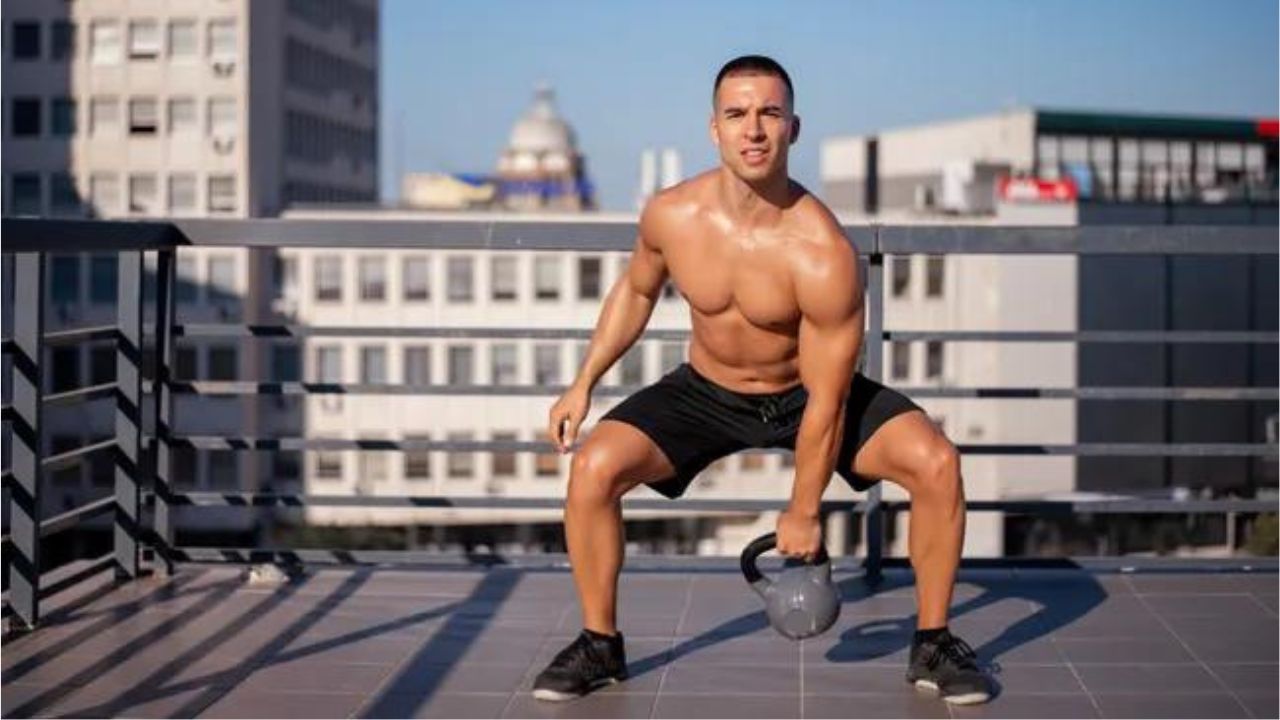
In less than 30 minutes, target your upper and lower body as well as your core muscles by attempting these four kettlebell exercises. Grab one or two of the best kettlebells and lay down your exercise mat.
This kettlebell strength exercise, which targets your legs, glutes, back, shoulders, and arms, strengthens your core. It is brought to you by functional fitness YouTuber JTM Fit. Almost every muscle group is worked, which also checks boxes for efficiency.
We suggest using a set of heavy kettlebells that you can press above your head to complete the workout. Work on one side of the bell at a time and divide or multiply the repetitions if you only have one bell; there will be enough of them.
What useful kettlebell workout consists of four movements?
If you can’t get to the gym, all you need is enough room to roll out your mat from wherever you are. This collection of muscle-torching routines is certain to raise your heart rate and give you a full-body burn in a short amount of time.
If you’re new to kettlebell training, you may learn some of the grips that come up in exercises like cleans and squats by reading our guide on holding a kettlebell correctly. The goal is to complete two sets of the exercise and then proceed right into the next one.
After completing the four-move cycle, relax for two or three minutes before beginning the next round. For a full-body workout that works well and increases heart rate, muscle growth, and metabolism, repeat this five times.
A summary of the four exercises is provided below:
Sumo deadlift
Two-person power cleaning
Squats with two front racks
Press the button.
For instance, begin with two sumo deadlifts, reset the mat’s bells, and then proceed to kettlebell power cleans. Following the second clean, complete two push pushes and two squats while maintaining the kettlebells in the front rack posture.
Because there are just two repetitions each motion and lots of downtime in between rounds, make the most of your working sets by lifting heavy weights—almost to failure—while maintaining proper form and a tight stomach.
Although working with two kettlebells can help you lift more weight overall, you can also work unilaterally, or one-sidedly, if you just have one kettlebell available. To prevent your dominant side from taking control, unilateral training helps to achieve the same intensity on both sides of the body.
It’s an especially helpful training aid if you want to enlist the stabilizer muscles that aid in lifting and improve your weaker muscle groups.
Trainer Advice
You’ll direct the majority of your attention toward the posterior chain muscles that run the length of the back during sumo deadlifts. Place the bells side by side between your feet in a foot stance that is just broader than shoulder width. Avoid arching or rounding your back; instead, maintain a flat back.
Take a tiny step back to make room as you approach the hike cleans. Once more, maintain a flat back while pushing the two bells in the direction of your shoulders, maintaining them in close proximity to your body.
The focus of the exercise is power. The movement pattern is reversed when you lower the kettlebells, unlike standard kettlebell cleans, where you set them on the mat in front of you, swing them between your legs, and drive up.
As you perform the squats, keep your knees pointed outward and imagine that your feet are pushing the ground away. Maintaining the kettlebells in the front rack position requires you to keep your elbows slightly elevated and your heels grounded. This is a step-by-step guide on performing a front rack kettlebell squat.
To complete the complex, punch the bells into the air, lock both arms out at the top, near the body, and dip into the legs while pushing the weights above your head. The movement is aided by the legs and core, but do not crouch down—this is not a kettlebell thruster.
Remember to brace your stomach and maintain a neutral spine throughout the exercise.

